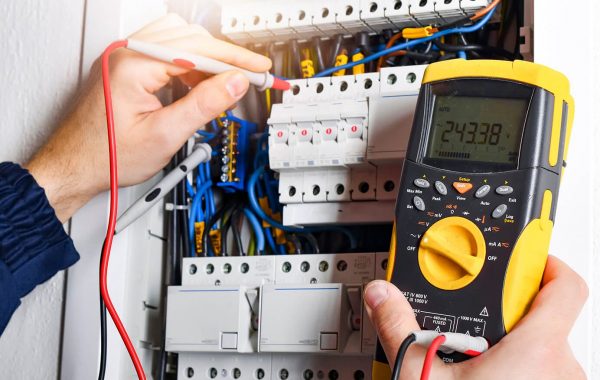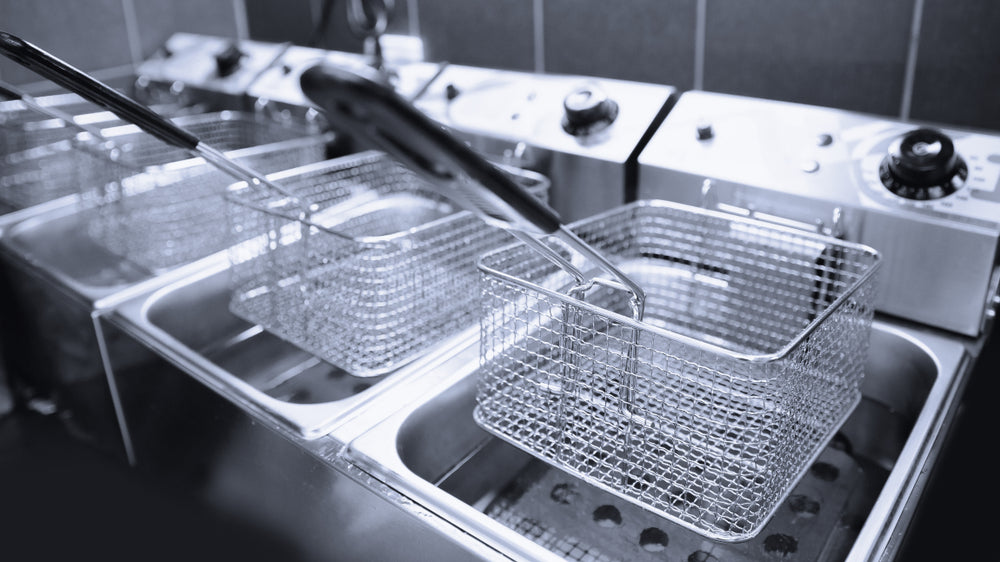
INSTALLING GAS APPLIANCES IN COMMERCIAL KITCHENS
Why Use Gas?
Even though electricity and induction cooking is widespread, gas is still considered to be one of the most popular cooking fuels in the professional kitchen.
- High heat: whether you're cooking flambé or just boiling a large pot, you can achieve the cooking results you're looking for quickly. Even large commercial oven ranges heat up fast in comparison to electric versions.
- Saves waste: although most gas appliances are controlled by a manual dial, the responsiveness you get is very precise, meaning it’s easier to regulate temperature quickly. That means fewer burnt dishes or spoiled sauces.
- Even heat: gas hobs evenly distribute heat across the bottom of the pan, meaning there’s fewer hot spots and food is cooked more evenly.
- Economical: gas ovens and burners tend to be cost-effective to run in comparison to electric models, although the price of both gas and electricity supplies are subject to change.
- Woks: although there are electric hobs which are specifically designed for woks, gas is by far the most popular and traditional fuel for wok cooking.
- No electrics: older buildings or kitchens in rural areas can sometimes be quite limited in terms of the load which can be put on the electricity circuits, so gas is a great alternative. It’s worth noting that some gas appliances may still require an electricity connection if they have digital functions.
NATURAL GAS OR LPG?
The two most common types of gas used commercially in the UK are natural gas and LPG. On the whole, there’s not a huge difference between cooking with the two types, however there are a few important aspects to consider.
Natural Gas
Often simply called mains gas, natural gas is common in urban areas with good access to utilities. Natural gas is supplied directly from the grid and usually costs to keep connected, even if it’s not being used.- Direct, permanent connection: gas hoses connect directly to a mains supply, meaning there’s no fiddling with hoses after installation. Simple.
- Reliable: no down time - cook as long as you need to without ever having to change a gas bottle.
- Economical: natural gas has historically been very cost-effective to cook with.
LPG/Propane
LPG or Liquefied Petroleum Gas is popular in the mobile catering sector, as well as in areas where mains gas isn’t available. Propane is highly efficient and is usually supplied in large canisters or cylinders.
- Portable: as there’s no need for a permanent connection or access to a mains pipe, you can take the fuel to areas where power might not otherwise be available.
- Independent supply: as long as you’ve got a full canister, you can cook. Although it’s unlikely, natural gas connections can temporarily be shut off if there’s a leak or other problem in the network.
- Powerful: LPG has a higher energy content than natural gas, meaning less gas is used to produce the same amount of heat.
- Storage: importantly, if you’re running LPG appliances, you’ll need to safely store the gas cylinders before, during and after use. Make sure you’ve got enough room for this before choosing LPG.
- Delivery schedule: to keep a constant supply, you’ll need to arrange regular deliveries and collections of the canisters. It’s fairly easy to set up, but it’s another important task which will need to be put onto your busy schedule. A missed or short delivery could leave you without the ability to cook.
Ensuring The Premises Are Suitable
Once you've chosen a gas appliance, it's important to make sure that your premises are suitable before purchase. If there's a problem with the site, or if the product details haven't been checked carefully, the engineer may not be able to install the unit first time. This could potentially lead to another call-out once any issues have been rectified.
It’s also possible that the unit could be completely unsuitable, which could result in a costly re-stocking fee. To avoid that, a site survey may be arranged. This can be completed either over the telephone or by a visit to your premises. A site visit may be chargeable. The following conditions are often checked:
- Size: will the product fit through internal and external doors to reach its end position?
- Gas type: do you have mains gas or LPG on site? If you have multiple natural gas appliances, will there be sufficient gas pressure to operate all the units?
- Extraction: gas appliances require kitchen extraction for the comfort and safety of staff working there - will the existing extraction be sufficient?
- Gas interlock systems are an added safety feature which MUST be installed if you’re using gas appliances indoors. The interlock is directly connected to your extraction and acts as a failsafe. If the extractor fails, or if airflow is insufficient, the interlock will restrict the flow of gas, helping to prevent accidents caused by a dangerous gas build-up.
TIP: It's a legal requirement to have sufficient extraction and a working, well-maintained gas interlock system.
- Gas Safety certificate: if you've already got gas appliances on site, there must be a valid Gas Safety certificate for the premises before installation. Installations cannot proceed without this certification. If it's a new site, or if the install is for the first gas appliance on site, the engineer will issue a job report which confirms the work complies with gas safety regulations. A separate gas safety certificate will need to be obtained for the site.
- Utility points: Check how far the gas connection is from the planned position of the appliance. If the unit also requires electricity, are there any plug sockets available nearby? A successful installation requires utility points within one metre of the appliance.
- Kitchen environment: is there anything else which would conflict with the running of the kitchen? Perhaps an oven door opening could cause a potential hazard. Maybe the unit creates a lot of heat - would that affect your refrigeration? Consider the other appliances in your kitchen.
- Plumbing: although this guide is primarily about gas installations, it’s worth noting that many gas appliances may also require a permanent water connection, especially gas combi ovens and steamers. A common misconception is that plumbing is just an "in" connection. Remember that where water is used, access to drainage will also be required. If you’re installing gas appliances which need access to water, they’ll need to be positioned within one metre of the utility points.
- Water filtration: if your appliance is plumbed in, limescale can cause significant damage and can lead to expensive repairs. It’s easily preventable though – if your water supply is medium or hard, you’ll very likely need to connect a commercial water filter to your appliance.
Delivery
Having chosen a product and confirmed the premises are suitable, delivery can be booked in. For most large gas appliances, delivery is kerbside delivery only. This means the transport company will deliver to the nearest ground floor access point possible to the address. In most circumstances, delivery drivers will not move the unit further into the site.
- Ensure access and parking are available for the delivery time slot.
- Make sure to check the unit and any packaging for signs of damage before signing.
- If the item is especially large or heavy, make sure to have enough help on-site to move the unit to where it needs to go.
- Position the unit where it will be used - this should be within one metre of the utility points. If the unit is a replacement, position the new appliance close by in an accessible place within the same room.
- Remove all the packaging and dispose of it responsibly.
- If you subsequently find any transit damage please call us within 24 hours of delivery.
Professional Installation
Once the appliance has been delivered installation can be scheduled. The engineer will carry out a number of tasks once they arrive:
- Double check the job requirements before starting.
- Thoroughly check that the unit is ready for installation, using the criteria above. In the event of a problem, the engineer will discuss possible remedial actions. The engineer will also agree who will do these and to what timescales.
- If the unit is ready, the engineer will safely install the unit, making it operational and ready for use. The installation will comply with BS6173 - installation of a gas appliance.
- Carry out some limited, appropriate testing to check the unit’s primary functionality is available.
- Confirm installation completion with you, providing appropriate documentation showing the work which has been done, with any supporting data/measurements.
We hope this helps you determine if the piece of equipment you are interested in is suitable or not for your establishment and commercial kitchen. If you would like to add installation to your order visit our installation & removal services page.

INSTALLING GAS APPLIANCES GUIDE
Installing a new gas appliance in a commercial kitchen might sound like a complicated process, but it doesn't have to be. As long as you follow the correct advice and use fully qualified and accredited professionals, you can have a powerful new cooker or hob ready to go in next to no time.This guide should help you understand the full process, from ordering your machine to the final installation sign-off.

ELECTRIC POWER GUIDE
If there’s one thing that all catering appliances have in common, it’s power. Every machine, from blenders and blast chillers to cookers and combi ovens all require either a gas or electricity connection. With electrical appliances, one of the most common questions we get asked here is “What’s the difference between single phase and three phase power?”. As power requirements can vary greatly between machines, it's vital to know the difference to ensure your investment is an asset to your kitchen.

Purchasing A Commercial Fryer Guide
Whether you’re frying fish, chicken, doughnuts or chips, a Commercial Deep Fat Fryer is the ideal to produce deliciously crispy and succulent foods. However, choosing the right fryer from such a vast range could seem overwhelming at first. For many businesses, a professional commercial fryer is the primary cooking appliance that generates vast amount of revenue, so it’s vital to understand the features, limitations and which type of unit is best suited to your business.
